| PROFILED: Ingredion (NYSE: INGR) | RETIRE RICH Normally, my stock recommendations would appear under Market Conditions. However, this particular stock is not only a great pick but a serious dividend payer. That's why I have included it here. To retire rich, we need those compounded dividends to add up quickly. Since becoming a publicly traded company in 1998, it’s paid a dividend every year. Not only that, for the last five years, this company has grown its dividend at a rate of more than 20% per year. Then in March, it raised its dividend 46%. We’re adding this Relentless Dividend Raiser to our Performance Portfolio immediately. |
In 371 days, millions of soccer fans will descend on Brazil for the 2014 World Cup. These fans will need hotel rooms, souvenir T-shirts, bowls of feijoada and beer. Since 2003, Brazil has banned the sale of alcohol at sports venues. However, FIFA, soccer’s ruling body, has demanded that all 12 World Cup stadiums sell beer.
Over the course of the 32-day tournament, 3.3 million ticketholders will be able to buy a brew. Most will buy more than just one. If you’re a Brazilian brewery, how do you ramp up production for millions of extra beer servings over this one-month period? You could construct new buildings and fill them with mash tuns, copper tanks, and tubing. That would be expensive and time consuming, and your work would go to waste as soon as the World Cup finished. You could try brewing beer ahead of time, but you’d have to buy extra vats or kegs to store it. Or you could do something simple.
You could switch the ingredients you use. You see, there’s a secret in the beer industry. It’s a special ingredient that reduces the beer’s cooking time. It reduces the filtration time. And it eliminates the extra work that comes with using solid grains. By adding this one ingredient into the production process, brewers will be able to instantly increase production, without any decline in quality. It’s more expensive than the crushed grains brewers use when demand is low. But it allows brewers to use their equipment to maximum capacity when demand is high.
The name of the additive is “high maltose.” It’s a derivative of corn. By adding it to the beer vat, it provides sugars that are easy and fast to ferment. This allows a brewery to increase the amount of beer it makes, which increases profits for the beer company. High maltose is an example of an important global commodity we call “agricultural additives” or “natural additives.” Agricultural additives are the byproducts of commodities such as corn, tapioca, wheat, potatoes, and cassava. When these natural products are milled, they produce byproducts such as starches, sugars, oils, and meals. When you add these agricultural additives to other products, they change the flavor and texture of those products. They extend shelf life.
They provide gluten-free options for people with allergies. They keep oils from separating out of lotions. They help ink stick to paper. They even help save lives when IVs rehydrate people. You’d never even know these additives were part of the finished products. But they’re the building blocks for tens of thousands of products we use every day. Food manufacturers like Nestle, Unilever, or Kellogg’s use agricultural additives in baked goods and processed foods. These two categories have been on a steady climb for decades.
In 1982, for example, they accounted for 25% of the dollars Americans spent on groceries. By 2012, that total had climbed to 37%, a 48% increase. Worldwide, sales of processed foods are approaching $4 trillion per year and nearly all of those foods use some kind of agricultural additives. Mankind has been using agricultural additives like these for years but as technology and consumer tastes have evolved, there’s been an almost “quantum leap” in the number of uses and applications for these agricultural additives.
Global Industry Analysts is a global market research company that covers more than 180 major industries worldwide. It estimates the compound annual growth rate for agricultural additives at 7% per year through 2018. This is twice the growth rate of the global economy as a whole. Today, we’re going to tell you about a small company that’s benefiting from the bull market in agricultural additives. It’s a producer of agricultural additives. If the research is correct, this company will grow its earnings at up to 10% per year for the next five years...a 60% increase in profits. Assuming valuations don’t change, we’ll be up 60% five years from now.
Additionally, this company is cheap at current prices. As the investment community begins to pay attention to this trend, this company’s valuation should improve. We’ll make even more money. This company has been paying a dividend since it went public in 1998. In March, it raised its dividend 46%!
The Coming Bull Market in Agricultural Additives
The world is changing. Over the next 20 years, the United Nations Development Program expects 1.5 billion people to join the middle class in Asia alone. People who move up the economic ladder drive newer cars, live in bigger houses, and use more electricity. They also eat more processed foods, for variety and convenience. That means the demand for agricultural additives will explode in the years ahead. There’s another big trend that’s driving the boom in agricultural additives: Consumers in developed regions like Europe want healthier foods. Here, the focus is on specialty ingredients… Additives that increase nutrition or decrease calories.
For example, in Europe, there is a new trend toward “clean labels.” This simply means using ingredient names on labels that people understand. The European Union regulates ingredient names. By treating starches with heat instead of enzymes, you can call an ingredient “starch.” Consumers in Europe understand this word. It doesn’t raise concerns about health or safety. The investing community is starting to take notice of the huge growth opportunity in agricultural additives because of these trends in Europe.
Now, one of the first signs of a “hot” and growing industry is an increase in mergers. Food-processing companies just had their third straight year of merger increases. In 2012, they accounted for more than one-quarter of the food industry total. And food-processing companies are the No. 1 users of agricultural additives. With merger activity highlighting the growing trend toward processed food, it’s time to invest in the companies that supply them but companies that produce agricultural additives are hard to find.
One is a large, privately owned business, named Cargill. Another, Archer Daniels Midland Co. (NYSE: ADM), has a market value of more than $20 billion. Agricultural additives are just a small part of its total business. There is one small company we’ve found to play this growing trend in agricultural additives. This company is Ingredion (NYSE: INGR), our profiled recommendation.
Ingredion’s Additives Stranglehold
Ingredion is a “pure-play” agricultural additives business. It has no transportation division, no farming business, or any other side businesses. It produces only agricultural additives in 40 countries around the world. It sells these additives to food processors and other companies around the world. They use these additives to make their products.
Each culture has its own food preferences. Ingredion understands this. Local experts staff their factories and, in turn, sell the additives to local companies. It’s the only way to provide the exact products that each culture demands. For instance, Ingredion sells water-soluble soy isoflavones in South Korea. Cassava modified starch in Brazil. And in the U.S., a soluble calcium complex for fortifying products with the mineral.
Ingredion also has a patented line of ingredients, called Novation, to capture the new “clean label” trend in Europe. Any company using Novation additives needs to list only “starch” on its ingredient label. Right now, there is such demand for this product in Europe that Ingredion is building new plants to expand production of the Novation line of additives. But the interest that started with European regulation is spreading to North America.
The new plants Ingredion builds will provide sufficient volume to export Novation products to the U.S., boosting sales even more. There are other synergies between countries too. The processed tapioca popular in Thailand provides gluten-free alternatives in the U.S. Starches that reduce calories by replacing oil are finding acceptance in Mexico as concern over obesity increases. When Ingredion develops products for one country, it looks for larger worldwide trends. Selling those products in other countries increases the returns on its research and our profits.
Recession-Resistant Business Model
Ingredion is based in Chicago. It has a market cap of $5.1 billion and annual sales of $6.5 billion. Most importantly, it meets our criteria of safety. It’s recession resistant and has a conservative management team. First, Ingredion has been around a long time. It’s not a startup or some kind of speculative technology company. Ingredion started business more than 100 years ago as Corn Products Refining Co. Among its pioneering products were Argo Corn Starch in the famous yellow box and Karo Corn Syrup.
In 2010, it acquired National Starch, which focused on specialty starches. With that addition, it became clear that Ingredion’s focus had become broader, encompassing a wide range of food additives. Corn Products Intl. changed its name to Ingredion. Ingredion’s business is recession proof. The products it sells are critical to the food-processing industry. If consumers economize by buying a store brand of soda or shampoo instead of a name-brand one, it doesn’t matter to Ingredion. Its additives are necessary in expensive and cheap brands alike.
As a pure play, Ingredion’s business focuses on one type of product: agricultural additives. But that doesn’t mean it isn’t diversified. Right now, only 30% of its sales come from the U.S. Mexico is another 17%. It is the largest refiner of corn-based starches and sweeteners in South America, beating out giants like Archer Daniels Midland and Cargill. Asia is a small but growing segment too. This means Ingredion doesn’t depend on economic growth in any one area of the world. Not only are Ingredion’s sales diverse geographically, they also sell products to a wide range of industries. Food is a hefty 44% of its sales, but that reflects a diversity of products, from fiber that aids digestion to the more traditional starches that create the right viscosity in dressings. Beverages, including beer brewing, provide another 24% of sales, and paper products 9%. Byproducts sold as animal feed are 12% of sales.
Ingredion’s diversification makes it resistant to changes or downturns in any given area. There’s one more reason Ingredion is safe. Its responsible management team hedges commodity risk...Commodity prices. That is the Achilles’ heel of any company using large amounts of a natural commodity, as Ingredion does. Commodity prices can swing up and down, resulting in huge effects on costs… and therefore profits. Ingredion tackles the commodity beast in two ways. In North America, most companies sign one-year contracts for agricultural additives. When managers sign a contract, Ingredion requires them to buy the commodities they’ll need to fulfill that contract. In some cases, they simply buy and store the commodities they’ll need. With many commodities, especially corn, that simply isn’t practical. Instead, the managers will hedge the commodity. That simply means they pay someone, an investor, to guarantee the price. It will cost Ingredion a few percent of the total cost to buy that insurance but it’s already included that cost in its prices.
It won’t matter if the cost of corn goes up, down, or stays steady. That other investor has taken on the risk and rewards of owning the corn. Outside North America, three-month contracts are the norm. That means if the cost of a commodity—tapioca or corn, for example—starts rising in price, Ingredion will raise its prices in the next contract. Because Ingredion has additives that companies need to produce their own products, it is usually able to pass along higher costs. Occasionally, companies balk at higher prices. In that case, Ingredion can walk away from the deal. It may lose that sale, but it’s not forced to sell products at a loss because of a long-term contract. By keeping its commodity costs steady, Ingredion’s profits and cash flows will be steady. That allows Ingredion to commit to paying dividends, paying down debt, and building new plants to grow its business.
Ingredion’s recession-resistant products and conservative management team provide a strong measure of safety. The steady growth it’s experienced over the last 10 years proves the durability of its business plan. It’s also cheap, which gives investors a margin of safety too.
Cheaper Than Its Competitors
Valuing Ingredion isn’t as easy as with many companies in our Performance Portfolio. Most of its closest competitors are privately owned. There are no P/Es or price-to-cash flow numbers to compare to, because there is no public price for these companies. Archer Daniels Midland is a much larger, more diverse food company but it operates in the same industry. Ingredion currently sells at a P/E ratio of 12. Archer Daniels Midland sells at a P/E of 17. And the processed and packaged foods industry as a whole is selling at a P/E of 21.
For a well-managed, focused company, Ingredion is cheap. Ingredion also sells at eight times its operating cash flow. That’s low. Once we take out the cash it will use for new equipment, we’re left with free cash flow, the money Ingredion has left to reward shareholders. Right now, Ingredion sells at 13 times free cash flow. This is still cheap and ensures that Ingredion will be able to pay its dividend and grow earnings per share through acquisitions or share buybacks.
How We’ll Make 10% per Year for Five Years
Producing agricultural additives as Ingredion does requires extensive machinery. It’s a capital-intensive industry. Many companies think only about growing sales. Ingredion makes sure that when it grows, new investments it makes will pay for themselves, with some left over for shareholders. If it finds a good company to buy at a reasonable price, it will do that. If it sees a growth opportunity like the Novation clean label products, it will build new plants.
Ingredion’s management team practices discipline when it comes to rewarding shareholders. Since becoming a publicly traded company in 1998, Ingredion has paid a dividend every year. Over that time, it has grown dividends at a compound rate of more than 20% per year. It doesn’t raise its dividend every year. Some years, when there’s a lot of uncertainty (like during the financial crisis), Ingredion will be cautious and wait to raise its dividend. Other years, when it sees a big opportunity for growth, it will use that cash for an acquisition. Since it started paying dividends in 1998, it has raised its dividend 12 times.
Most recently, in March, Ingredion raised its dividend 46%. Even with this huge increase, Ingredion’s dividend payout ratio is low, 26% of expected earnings in 2013. That means it has plenty of room left to keep increasing dividends. All of these factors qualifies it for our Relentless Dividend Raisers Portfolio. Since Ingredion went public in 1998, it’s grown its earnings per share at a rate of 17% each year. That’s a huge amount of growth during the last 14 years. With the bull market in these agricultural additives, this level of growth could continue. But we’re going to be conservative and assume that Ingredion grows its future earnings per share at 10% per year for the next five years. Assuming valuations don’t change, its share price will grow at 10% per year right along with its earnings. We’ll make 60% total returns over the next five years. And we’ll get a 2% rising annual dividend as an added bonus.
Action to take: Buy Ingredion (NYSE: INGR) up to $72 with a 25% trailing stop.
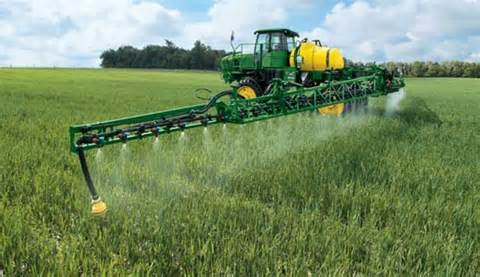

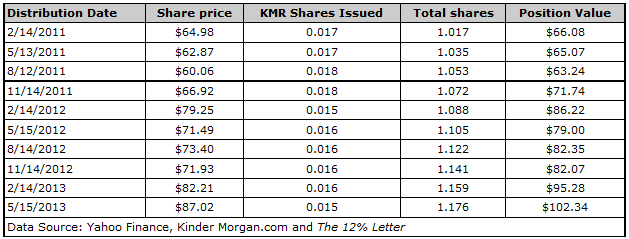
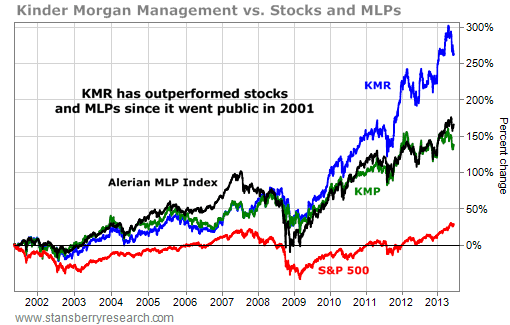
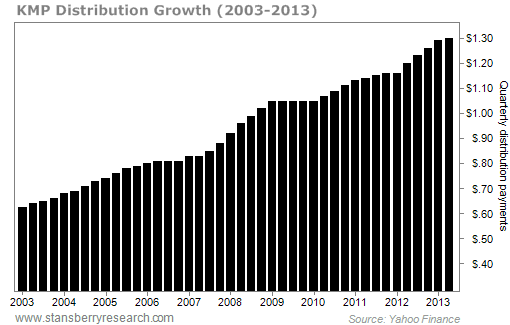
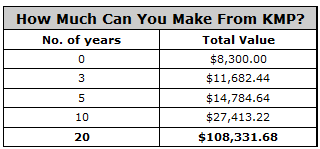



 RSS Feed
RSS Feed
